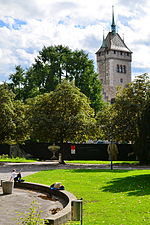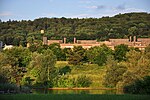Drosos Foundation
Charities based in SwitzerlandInfoboxes without native name language parameterInternational educational organizationsInternational environmental organizationsOrganisations based in Zürich ... and 2 more
Organizations established in 2003Poverty-related organizations
The Drosos Foundation (German: Drosos Stiftung) is a non-profit, charitable organization based in Zurich, Switzerland. Established in late 2003 with capital from a private endowment, the foundation was fully active by early 2005. The foundation is involved with more than 100 projects as of 2015, which work to fight poverty, promote health, increase access to education and creative activities for youth, and protect the environment. The foundation also has offices in Cairo, and Casablanca.
Excerpt from the Wikipedia article Drosos Foundation (License: CC BY-SA 3.0, Authors).Drosos Foundation
Obstgartenstrasse, Zurich Unterstrass
Geographical coordinates (GPS) Address Nearby Places Show on map
Geographical coordinates (GPS)
| Latitude | Longitude |
|---|---|
| N 47.3829 ° | E 8.5424 ° |
Address
Obstgartenstrasse 19
8006 Zurich, Unterstrass
Zurich, Switzerland
Open on Google Maps









